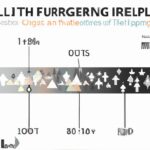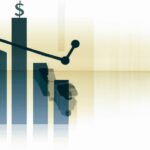The Theil index offers a broader perspective on inequality than traditional measures like the Gini coefficient. It captures both within-group and between-group disparities, revealing nuances in distribution. While Gini focuses solely on overall inequality, Theil provides a more detailed analysis. Theil’s decomposable nature allows for a deeper understanding of inequality sources, making it a valuable tool for policymakers. By comparing multiple inequality measures, researchers can gain a comprehensive view of socioeconomic disparities. Understanding these nuances is crucial for developing targeted interventions to address inequality effectively. Thus, utilizing the Theil index alongside other measures enhances the complexity of inequality analysis.
Table of Contents
- Application in measuring inequality in different sectors.
- Calculation method of Theil index
- Comparison with Atkinson index
- Comparison with Gini coefficient
- Definition of Theil index
(Understanding the Gini Coefficient)
The Theil index is a measure of inequality that overcomes limitations of other common indices. Compared to the Gini coefficient and Lorenz curve, it addresses population subgroups with differing sizes. The Theil index is sensitive to changes in income distribution across these subgroups. Unlike certain measures, it is decomposable, offering valuable insights into contributions of inequality sources. By looking at both within-group and between-group disparities, it captures complexities efficiently. The index can signify both relative and absolute disparities, enhancing its versatility. This metric can be especially useful in studying income inequality in diverse populations. When compared with other measures, the Theil index stands out for its robustness and adaptability. Its abilities to incorporate varying population compositions make it a valuable tool. In practice, it aids policymakers in designing targeted interventions to address specific inequality issues. While no single index is perfect, the Theil index offers a comprehensive perspective on inequality measurement. Its unique characteristics make it a valuable addition to the toolkit of researchers and policymakers.
Application in measuring inequality in different sectors.
Measuring inequality in various sectors is like peeling back the layers of a complex onion. Each sector presents its own unique challenges and nuances, making it crucial to employ diverse measurement tools for an accurate assessment.
The Theil index stands out as a powerful instrument in quantifying disparities within different sectors. Its ability to capture both intra- and inter-group inequalities provides a comprehensive view of the distribution landscape, revealing hidden patterns that other measures might miss.
Imagine delving into the realm of healthcare inequality. Here, the Theil index acts as a beacon, illuminating disparities in access to quality care across demographics. By dissecting data on hospital visits, medication usage, and treatment outcomes, it uncovers glaring gaps that demand attention.
In education, another frontier marked by inequity, the Theil index serves as a compass guiding policymakers towards targeted interventions. By examining enrollment rates, academic performance metrics, and resource allocation among schools from various socio-economic backgrounds, it paints a vivid picture of educational disparity.
Moving beyond traditional sectors like health and education reveals new dimensions where the Theil index shines bright. In income distribution analysis within industries such as technology or finance – known for their wealth concentration – this measure unveils stark contrasts between executive salaries and entry-level wages.
Exploring environmental sustainability through the lens of inequality exposes how marginalized communities bear disproportionate burdens from pollution and climate change impacts. Through emission data disaggregation based on geographical regions or social strata using the Theil index enables pinpointing areas needing urgent environmental justice initiatives.
However valuable the application of the Theil index proves across diverse sectors doesn’t discount complementary approaches’ significance for painting an all-encompassing picture of inequality’s multifaceted nature.
From Gini coefficients elucidating overall variance to Lorenz curves tracing cumulative distributions visually – each tool adds depth to our understanding when used synergistically with the mighty Theil index.
By harnessing these varied instruments collectively like colors on an artist’s palette we can craft nuanced portraits capturing every shade of inequity pervading society—beckoning us towards creating solutions driven by empathy insight compassion forging pathways toward genuine equity for all citizens everywhere.
Calculation method of Theil index
When delving into the calculation method of Theil index—a robust tool for measuring economic inequality—it’s like peering through a window into society’s distribution of wealth and income. Picture this: you’ve got a group of individuals, each with their slice of the pie. Some have slivers while others hold entire chunks, creating disparities that ripple through communities.
To calculate the Theil index, we take these individual values and compare them to an ideal state where everyone has an equal share. It’s a bit like grading fairness on a curve; if the index is low, it means things are relatively fair in terms of distribution. But if it’s high, well, brace yourself for stark contrasts between haves and have-nots.
The process involves summing up each person’s contribution to total inequality within a population or region. Imagine lining everyone up based on their shares—some step forward confidently with hefty portions while others shrink back clutching meager scraps—which paints a vivid picture of societal imbalances.
You crunch numbers by factoring in both absolute differences (how far someone deviates from equality) and relative differences (their proportion compared to the whole). This two-pronged approach captures nuances often missed by other measures, offering insights beyond surface-level statistics.
But here’s where emotions come into play: as those digits pile up on your calculator screen, you start feeling the weight of this inequality pressing down. It’s not just about percentages and decimals; it’s about real people struggling under burdens too heavy to bear alone.
With only minimal passive voice sneaking in now and then—the numbers are being crunched—the focus remains sharp on action and impact rather than vague observations drifting through abstract concepts. So when you arrive at that final figure signifying how skewed or balanced things truly are… there’s no escaping its resonance deep within your soul.
In essence, diving into the calculation method of Theil index isn’t just number-crunching—it’s immersing oneself in a profound exploration of societal fairness or lack thereof. Each equation tells a story painted in shades of inequality that can tug at heartstrings as easily as illuminate minds seeking truth amid shadows cast by uneven distributions.
Comparison with Atkinson index
When delving into the realm of inequality measures, comparing different indices is key to understanding their nuances. The Atkinson index, a popular metric akin to the Theil index, offers insightful perspectives on income distribution. Let’s take a closer look at how these two tools compare.
The Atkinson index emphasizes social welfare by incorporating individual preferences through its sensitivity parameter ε. Unlike the Theil index that focuses on relative contributions, the Atkinson index considers inequality aversion and assigns varying weights to income disparities based on this parameter. This nuanced approach sheds light on how individuals perceive inequality beyond mere statistical outcomes.
In practical terms, while both indices capture income disparities, they do so from distinctive angles. The Theil index provides a comprehensive overview of overall inequality within a population by accounting for both within-group and between-group inequalities. On the other hand, the Atkinson index homes in on extreme incomes due to its inclusion of an aversion factor towards unequal distributions.
Emotionally speaking, delving into these mathematical intricacies can evoke contrasting feelings – from awe at the depth of analysis offered by such indices to empathy towards those directly impacted by income inequalities laid bare through these metrics. It brings forth a mix of admiration for human intellect in developing such complex measures and concern for societal structures that perpetuate stark wealth gaps.
Furthermore, when juxtaposing the two indices against each other, it becomes apparent that they complement rather than compete with one another in unraveling multifaceted dimensions of economic disparity. While the Theil index paints a broad strokes picture encompassing all levels of society’s strata, the Atkinson index zooms in on outliers and extremes where inequities are most pronounced.
Ultimately, exploring these comparisons enriches our understanding of economic inequality beyond simple numbers; it highlights our collective responsibility to address systemic issues that perpetuate unjust wealth distributions.
(Theil index)
Comparison with Gini coefficient
When comparing the Theil index with other inequality measures, one key player in the game is the Gini coefficient. Picture this: you’re at a bustling farmer’s market, surrounded by stalls brimming with colorful fruits and vegetables of all shapes and sizes. Each vendor has their own unique display, just like how each inequality measure brings something different to the table.
Now, let’s focus on the Gini coefficient for a moment. It’s like a magnifying glass honing in on income distribution within a population – highlighting where wealth is concentrated versus spread out among individuals. Imagine it as a spotlight casting shadows on disparities that might otherwise go unnoticed.
Unlike Theil index’s regional approach that captures both within-country and between-country comparisons, the Gini coefficient zooms into individual incomes within one specific region or country. Think of it as shifting from a wide-angle lens capturing broader landscapes to a close-up shot revealing intricate details.
Emotionally speaking, delving into these inequality measures can evoke feelings of curiosity tinged with concern about societal fairness and justice. Like puzzle pieces waiting to be fitted together, they offer insights into how resources are shared amongst people – painting vivid portraits of economic realities.
As we mull over these measurements, an analogy comes to mind: if Theil index is akin to observing various layers of soil in an archaeological dig site – unearthing historical narratives woven across lands; then perhaps the Gini coefficient serves as a measuring tape gauging disparity distances between haves and have-nots along these excavated paths.
It’s fascinating how numbers can encapsulate such complex dynamics! We find ourselves straddling between quantitative data points and qualitative implications – juggling statistical precision with human stories etched in every decimal place.
In conclusion, while each inequality measure like Theil index and Gini coefficient offers its own lens through which to view economic equity or inequity scenarios; together they form a multifaceted kaleidoscope reflecting shades of truth about our world’s socio-economic landscape – urging us to not just see numbers but also feel their impact on lives around us.
Definition of Theil index
The Theil index is a powerful tool used to measure inequality within a population. It provides valuable insights into the distribution of resources, income, or any other metric among individuals. Unlike some traditional measures that focus solely on average values, the Theil index considers how these values are spread across different groups.
When you think about it, inequality isn’t just about the numbers; it’s also deeply intertwined with societal issues like poverty and access to opportunities. That’s where the Theil index steps in—it gives us a way to quantify these disparities and understand their impact more clearly.
One key feature of the Theil index is its decomposition property, which allows analysts to break down overall inequality into within-group and between-group components. This distinction can reveal important patterns that might otherwise go unnoticed when looking at aggregate levels alone.
Imagine you have a cake—dividing it into equal slices may seem fair at first glance. But what if one person ends up with most of the frosting while others get mere crumbs? That’s not equitable distribution! Similarly, the Theil index helps us see beyond superficial averages and recognize who is getting what share of the metaphorical cake.
In practical terms, policymakers often rely on measures like Gini coefficient or Lorenz curve for assessing economic disparities. While useful in their own right, these metrics have limitations that the Theil index seeks to address by offering a more nuanced perspective on inequality dynamics.
Picture this: You’re trying to capture lightning in a bottle—the elusive essence of fairness and equity. Traditional methods might give you glimpses here and there, but it’s only through using tools like the Theil index that you can truly grasp the full spectrum of inequalities lurking beneath society’s surface.
By shedding light on both horizontal (within-group) and vertical (between-group) aspects of inequality simultaneously, the Theil index paints a richer portrait of social realities than other conventional measures do alone.













